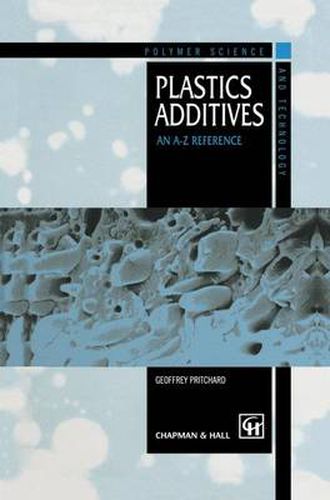Readings Newsletter
Become a Readings Member to make your shopping experience even easier.
Sign in or sign up for free!
You’re not far away from qualifying for FREE standard shipping within Australia
You’ve qualified for FREE standard shipping within Australia
The cart is loading…






This title is printed to order. This book may have been self-published. If so, we cannot guarantee the quality of the content. In the main most books will have gone through the editing process however some may not. We therefore suggest that you be aware of this before ordering this book. If in doubt check either the author or publisher’s details as we are unable to accept any returns unless they are faulty. Please contact us if you have any questions.
Although plastics are extremely successful commercially, they would never reach acceptable performance standards either in properties or processing without the incorporation of additives. With the inclusion of additives, plastics can be used in a variety of areas competing directly with other materials, but there are still many challenges to overcome. Some additives are severely restricted by legislation, others interfere with each other-in short their effectiveness varies with circumstances.
Plastics Additives explains these issues in an alphabetical format making them easily accessible to readers, enabling them to find specific information on a specific topic. Each additive is the subject of one or more articles, providing a suffinct account of each given topic.
An international group of experts in additive and polymer science, from many world class companies and institutes, explain the recent rapid changes in additive technology. They cover novel additives (scorch inhibitors, compatibilizers, surface-modified particulates etc.), the established varieties (antioxidants, biocides, antistatic agents, nucleating agents, fillers, fibres, impact modifiers, plasticizers) and many others, the articles also consider environmental concerns, interactions between additives and legislative change. With a quick reference guide and introductory articles that provide the non-specialist and newcomer with relevant information, this reference book is essential reading for anyone concerned with plastics and additives.
$9.00 standard shipping within Australia
FREE standard shipping within Australia for orders over $100.00
Express & International shipping calculated at checkout
This title is printed to order. This book may have been self-published. If so, we cannot guarantee the quality of the content. In the main most books will have gone through the editing process however some may not. We therefore suggest that you be aware of this before ordering this book. If in doubt check either the author or publisher’s details as we are unable to accept any returns unless they are faulty. Please contact us if you have any questions.
Although plastics are extremely successful commercially, they would never reach acceptable performance standards either in properties or processing without the incorporation of additives. With the inclusion of additives, plastics can be used in a variety of areas competing directly with other materials, but there are still many challenges to overcome. Some additives are severely restricted by legislation, others interfere with each other-in short their effectiveness varies with circumstances.
Plastics Additives explains these issues in an alphabetical format making them easily accessible to readers, enabling them to find specific information on a specific topic. Each additive is the subject of one or more articles, providing a suffinct account of each given topic.
An international group of experts in additive and polymer science, from many world class companies and institutes, explain the recent rapid changes in additive technology. They cover novel additives (scorch inhibitors, compatibilizers, surface-modified particulates etc.), the established varieties (antioxidants, biocides, antistatic agents, nucleating agents, fillers, fibres, impact modifiers, plasticizers) and many others, the articles also consider environmental concerns, interactions between additives and legislative change. With a quick reference guide and introductory articles that provide the non-specialist and newcomer with relevant information, this reference book is essential reading for anyone concerned with plastics and additives.